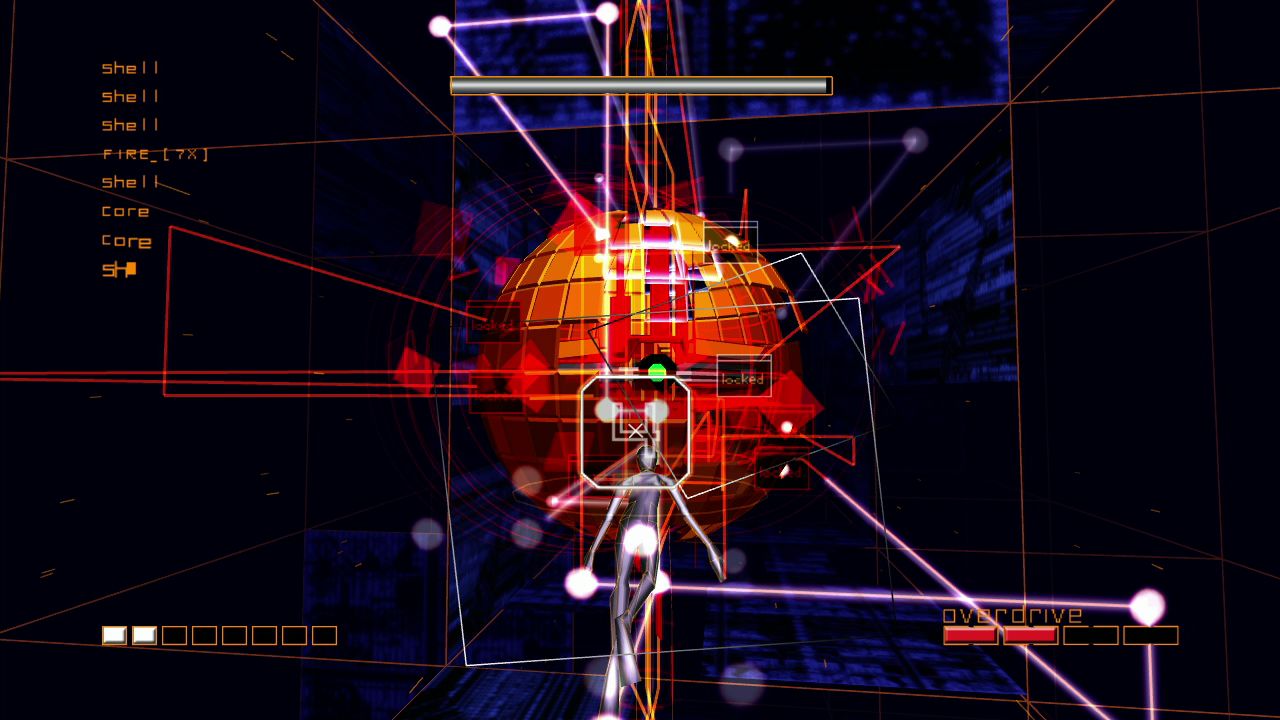As I’ve gotten older, I’ve become a pretentious “games as art” person. Nothing sums that up better than Grasshopper Manufacture’s 2005 opus Killer7.
It’s a poorly designed mess. Killer7 is essentially an on-rails shooter with an obtuse storyline and inconsistent difficulty. The controls are awkward and the interface is frustrating to navigate. But perhaps because of all this, Killer7 is beautiful.
This huge barrier to entry and steep learning curve make it all the more satisfying when you can finally comprehend the stylized cel-shaded look and the plot’s dive into Japanese mysticism. The gameplay takes countless twists and turns, and the boss fights are unforgettable.
It’s a game that many people will hate, but if you can get into it, Killer7 pays off in spades. It’s greater than the sum of its parts, and truly a work of art.
What makes this all work is the game’s director, Goichi Suda. He’s something the film industry thrives on, and the video game industry needs more of: Suda is an auteur. He doesn’t use dozens of metrics and playtest a game to death to determine a lowest common denominator of gameplay. He doesn’t care about appealing to the biggest possible audience. Suda makes the games he wants to make.
We need more Suda 51s.
Tuesday, January 31, 2012
Saturday, January 28, 2012
Rez is just Tetris at a vibrating rave party.
Rez is the point where rail shooters and music games collide. Designed by Tetsuya Mizuguchi of Lumines and Meteos fame, this 1998 Dreamcast/PlayStation 2 game was re-released in HD for Xbox Live Arcade a few years ago. And if you love raves, trance music, and/or do a ton of drugs, Rez is for you. It's a sensory overload.
In a way, Rez is a true successor to Tetris. Like the seminal Soviet puzzler, Rez consists of completely abstract graphics. In Tetris, you control arbitrary colorful blocks falling in an arbitrary pit. In Rez, you control an arbitrary cyber-person shooting arbitrary colorful flying objects. Both games have marginal stories imposed onto them, but plot doesn't matter at all in either game.
And much like Tetris, enjoyment of Rez depends largely on rhythm. Now I know what you're about to say: "But Jake, Tetris isn't a rhythm game!"
Oh, but it is. Tetris is the consummate casual game: you can play it for two minutes, or you can play it for two hours. The reason we're able to fall into a Tetris trance for so long is the rhythm. The Russian soundtrack is classic, but even without the music, players get into a certain groove clearing line after line of blocks.
Rez is the same thing on drugs. The rail shooting isn't an exciting game mechanic, and the enemies are repetitive. But players get into the same groove playing this game that they do playing Tetris.
Mizuguchi takes the rhythmic play to the next level. Rez's levels have psychedelic visuals and a pumping trance music soundtrack. Perhaps the most notable aspect of this rhythm, though, is the vibratin'.
Whether it's the force feedback of shooting a gun in Call of Duty or the pang of hitting the post in FIFA, tactile feedback through the vibration feature of modern game controllers is something players often overlook, but when used correctly, adds to the game experience.
Rez utilizes vibration perhaps more than any game before or since. A subtle buzz accompanies the beat of the game's music, along with the rumble of shots fired. But it doesn't end there. In Rez, players can activate multiple controllers for the sole purpose of "trance vibration"--each controller vibrates for different purposes. It's a genius concept, and more than a little suggestive.
I'd love to see games in the future vibrate the same way Rez does.
In a way, Rez is a true successor to Tetris. Like the seminal Soviet puzzler, Rez consists of completely abstract graphics. In Tetris, you control arbitrary colorful blocks falling in an arbitrary pit. In Rez, you control an arbitrary cyber-person shooting arbitrary colorful flying objects. Both games have marginal stories imposed onto them, but plot doesn't matter at all in either game.
And much like Tetris, enjoyment of Rez depends largely on rhythm. Now I know what you're about to say: "But Jake, Tetris isn't a rhythm game!"
Oh, but it is. Tetris is the consummate casual game: you can play it for two minutes, or you can play it for two hours. The reason we're able to fall into a Tetris trance for so long is the rhythm. The Russian soundtrack is classic, but even without the music, players get into a certain groove clearing line after line of blocks.
Rez is the same thing on drugs. The rail shooting isn't an exciting game mechanic, and the enemies are repetitive. But players get into the same groove playing this game that they do playing Tetris.
Mizuguchi takes the rhythmic play to the next level. Rez's levels have psychedelic visuals and a pumping trance music soundtrack. Perhaps the most notable aspect of this rhythm, though, is the vibratin'.
Whether it's the force feedback of shooting a gun in Call of Duty or the pang of hitting the post in FIFA, tactile feedback through the vibration feature of modern game controllers is something players often overlook, but when used correctly, adds to the game experience.
Rez utilizes vibration perhaps more than any game before or since. A subtle buzz accompanies the beat of the game's music, along with the rumble of shots fired. But it doesn't end there. In Rez, players can activate multiple controllers for the sole purpose of "trance vibration"--each controller vibrates for different purposes. It's a genius concept, and more than a little suggestive.
I'd love to see games in the future vibrate the same way Rez does.
Subscribe to:
Comments (Atom)



